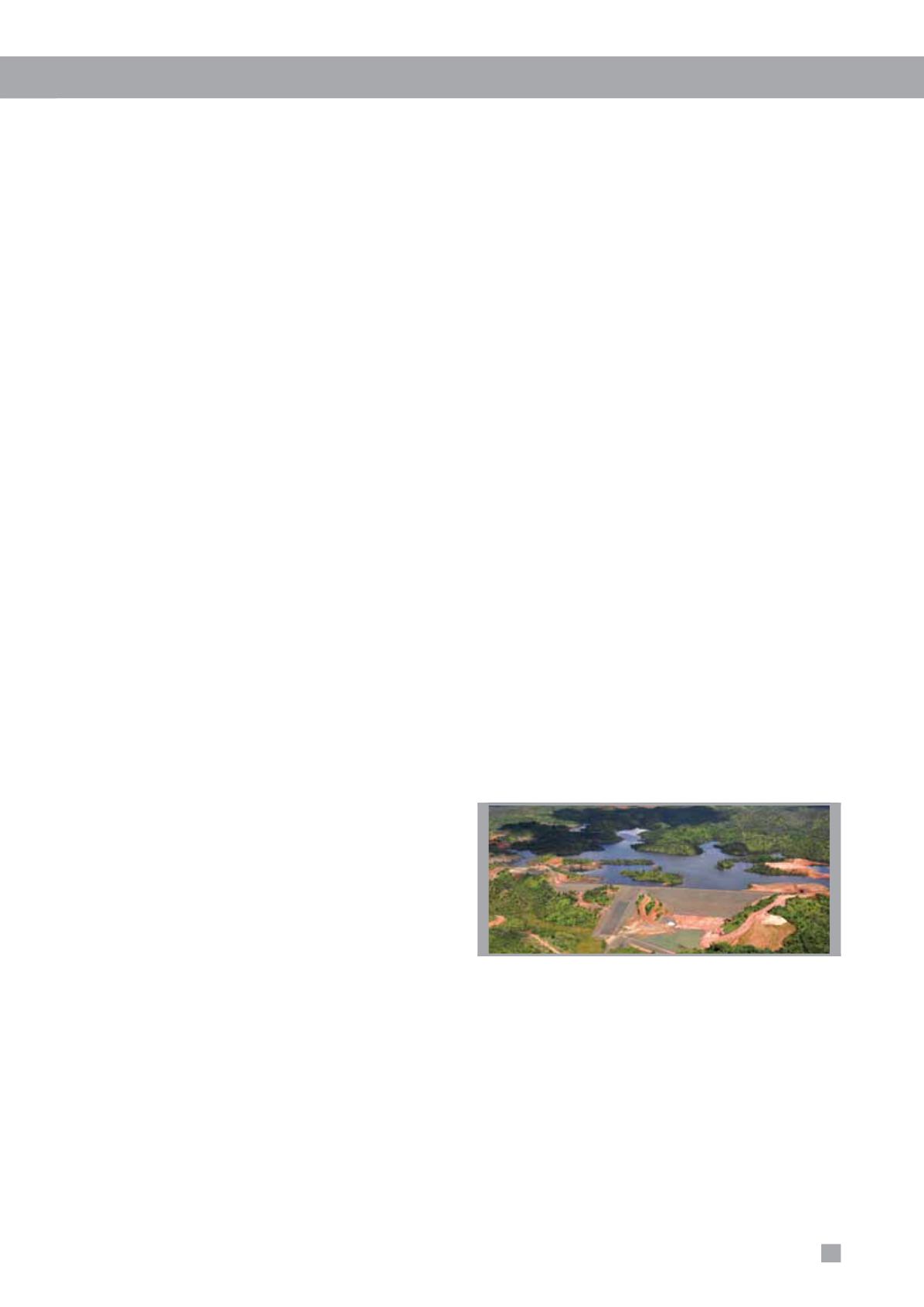
2010
AMBATOVY SUSTAINABILITY REPORT
25
C1. Environmental Performance
C1.4 Emissions, Effluent and Waste
Ambatovy’s Waste Management Plan was developed to
put in place the necessary measures and procedures for
correct storage, collection, transportation and disposal of
waste generated by the Project’s construction and operations
phases. Waste management will be carried out in a manner
that is safe, efficient and environmentally secure.
The main objectives of the Waste Management Plan are:
3
To minimize waste through reduction, reuse, recycling
and recovery.
3
To reduce the volume of waste through the
implementation of well-defined plans and procedures.
3
To prevent or minimize any adverse impacts on the
environment, in particular impacts related to the local
population, flora, fauna, surface and groundwater and
surrounding air.
3
To ensure that all businesses, contractors, staff and
managers take all necessary measures aimed at:
k
Ensuring the health and safety of site personnel,
including all employees, subcontractors, vendors
and visitors
k
Optimizing the use of available resources
k
Avoiding costly cleanup operations
k
Preventing and reducing any adverse effects
3
To stabilize waste through appropriate treatment or
elimination.
3
To track all waste generated, treated and disposed.
In accordance with the terms of the Basel Convention,
Ambatovy does not ship any waste out of the country.
Waste management during construction has focused on
wastes generated by construction (i.e. domestic waste
from camps, waste construction materials, scrap metal,
wood, plastic bottles, paper), based on a combination of
reuse, recycle, treatment, landfill, sale (for scrap metal) and
incineration. In the operations phase, waste volumes will
decline and the proportion of wastes recycled or incinerated
will rise. All chemicals utilized within the process will be
consumed.
Recycling of Used Materials
During the construction phase, the plant site generated an
average of 600 m
3
of waste timber a month. To make use
of this material, Ambatovy set up a program to prepare, sort
and distribute this wood to nearby communities that prepared
detailed plans for the reuse of the timber. These communities
have used this material to build benches, tables, cupboards
and various other items for use in schools and churches.
Plastic bottles are collected by a local contractor for shredding
and recycling. Bottled mineral water is being progressively
replaced with potable water produced by the plant, distributed
to water coolers and dispensed into reusable bottles. Scrap
metal is sold to a local company.
At the mine site, all solid waste is sorted. Vegetable food
waste is separated for composting, while meat waste is
incinerated. Paper, plastic and wood are all appropriately
sorted for recycling.
Overburden
At the mine site, there is a comprehensive system for
dealing with overburden and waste rock that is screened
and rejected from the slurry-making process. Overburden
is primarily composed of large pieces of rock and ore with
low levels of nickel and cobalt. Between six and ten percent
of the total materials mined are rejected as overburden,
returned to the pit and covered with topsoil during the mine
site rehabilitation process.
Production estimates:
3
90-94% of all mined material will be converted to slurry
3
6-10% will be rejected as overburden
3
A capacity of 1,000 tonnes per hour of materials go
into the primary sorting process
3
Up to 100 tonnes per hour of overburden will be
returned to the mine site
Tailings
The tailings are neutralized with limestone and pumped
from the plant site via a 15 km pipeline to the 750 ha tailings
facility. Ambatovy’s tailings facility was built to specifications
consistent with the requirements of the IFC. The facility will be
progressively stocked with inert waste material. Supernatant
mineralized water from the tailings facility is sent down a
pipeline and discharged into the ocean via a 1.5 km outfall,
the last 500 m of which are equipped with 100 diffusers to
ensure rapid dilution and make localized impacts unlikely.
The mineral content of the excess water – which is quite
similar to that of seawater – is rapidly absorbed by the
tremendous volume of the ocean itself. When the tailings site
has been filled, it will be reclaimed and drainage systems
re-established.
The tailings site was chosen for its relatively low
environmental sensitivity.


